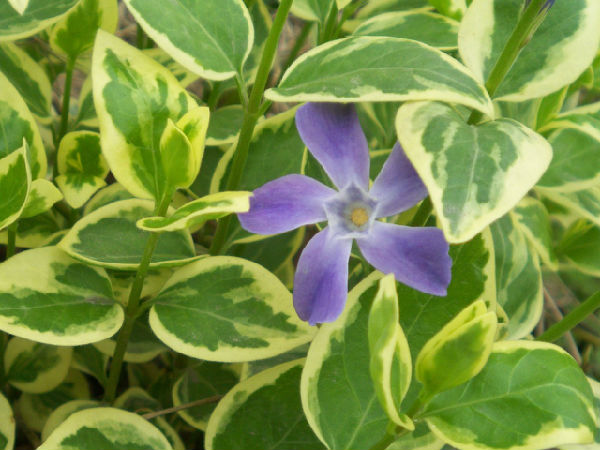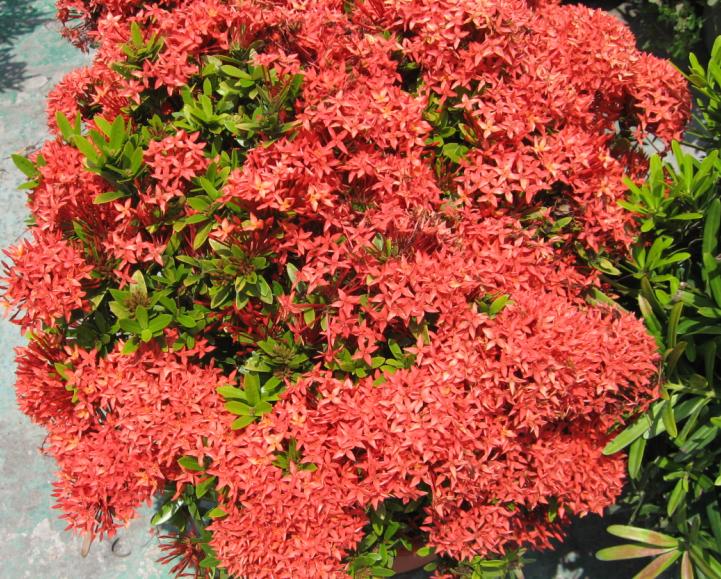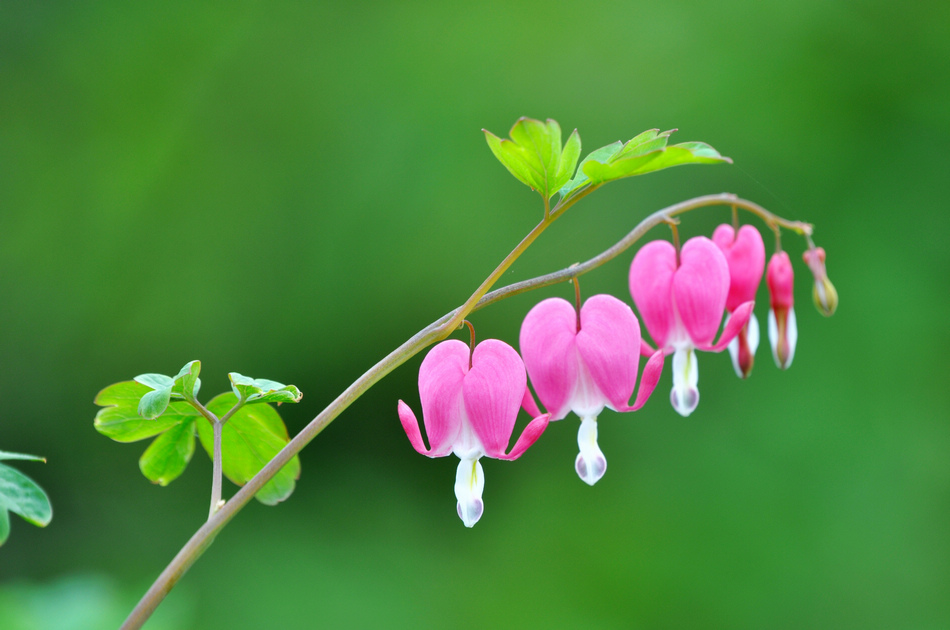Culture methods and matters needing attention of flower and leaf vines in Changchun
Ramet
Breeding should be carried out in spring. At this time, the old branches of the last year are cut off, the plants are separated, planted separately and watered through; striping propagation is carried out in the growing season.
Cuttage
Breeding can be carried out all year round. The cutting substrate is made of perlite, vermiculite or sand with good water retention (growing season). Cutting in autumn and winter should be carried out in greenhouse or sunny border, and cutting in greenhouse with electric hotbed in winter will lead to higher rooting rate. The cost of cutting in greenhouse is too high, in order to obtain a large number of plants, we should choose outdoor cutting bed cutting in the growing season. Select strong and substantial branches as cuttings, the length of cuttings should be determined according to the season, winter should be long, about 10-13 cm; summer temperature is high, water evaporation is large, cuttings should not be too long, about 8-10 cm (2-3 nodes). Two leaves are left in the upper part, and the lower part is cut to the root of the node, buried in perlite or sand and watered thoroughly. When cutting, there must be 1mi and 2 sections buried in the sandy soil of the river, compacted and pat, and watered and moisturized in time. In order to reduce leaf transpiration and prevent leaf wilting, when the light is strong in summer, a shading net with a shading rate of 30% Murray and 50% shading can be set up above the cutting bed, shading for about 20 days, or cutting under the shade shed. After the seedlings begin to take root, remove the shading net, control moisture and increase light. Plants that have taken root should be transplanted in time, with 3-4 plants per pot or clump, so that they can take shape quickly and have high ornamental value. If transplanting in the outdoor nursery at the end of autumn, cold prevention measures should be taken in winter, such as covering sawdust, grass seeds and so on.

I. the ecological habits of Changchun.
The flower and leaf vine in Changchun likes light and is tolerant to shade and low temperature. Under the temperature of-7 ℃, there is no frost injury when planted in the open field.
The flower and leaf vine is evergreen all the year round, and the tillering vine and the violet floret blooming in March cover the earth with a green carpet. The scenery is very spectacular, and it is an ideal material for flowers and leaves and ornamental ground cover. It has strong adaptability, lax requirements for soil and fast growth.
2. the culture method of flower and leaf vine in Changchun.
1. Propagation: commonly used ramet and cuttage propagation. Ramets can be dug up and planted together with stolon nodes every spring. During the mildew and rain period from June to July, the sturdy branches with a length of 10 cm were cut, and 1-2 internodes were selected to be planted in the rotten leaf soil for about 20 days to take root.
2. Temperature: Changchun prefers warmth, and the optimum temperature for growth is 18-20 ℃ from April to August, and 13-18 ℃ from September to March of the following year. Changchun is more cold-resistant and can endure a low temperature of about 10 ℃. If it is moved indoors, it can survive the winter safely. Even if the aboveground part dies due to frost injury, it can still sprout and branch in the next spring. But it is best to keep the temperature of the pot at about 5 ℃.
3. Illumination: the flower and leaf vine is shade-tolerant in Changchun, and it can grow healthily as long as there is scattered light. From October to April of the following year, if you can give sufficient light to Changchun, it is more conducive to the growth of Changchun, which is bogey to strong sunlight exposure, otherwise it is easy to cause leaf tip and leaf edge scorching, so May-September should be shaded.
4. Watering: Changchun likes a humid environment and can withstand water and moisture. During the growth period, we should fully supply water, keep the basin soil moist, and spray water to the leaves to increase the humidity of the growing environment in Changchun. When overwintering, it is necessary to control watering to keep the basin soil relatively dry.
5. Fertilization: due to the rapid growth of flowers and leaves in Changchun, it is necessary to supply the nutrients needed for growth in time. Fertilizer combined with nitrogen and potassium should be applied 1-2 times a month to promote the vigorous growth of flowers and leaves in Changchun and to make the markings on the leaves brightly colored. After entering autumn, it is necessary to stop the application of nitrogen fertilizer and increase the application of potassium fertilizer in order to facilitate the cold resistance of jacquard leaf vine Changchun. Stop fertilizing in winter.
6. Pruning: the young plants of Changchun should be heart-picked 1-2 times and given good fertilizer pipe-management, so that Changchun will soon form an ideal crown width. When the branch tip of Changchun branch grows too long, the length can be controlled by coring and topping, so as to promote the growth of Changchun. The flower and leaf vine Changchun which is worse than the growth potential can be re-cut in combination with turning the basin in spring to adjust the growth potential and make the flower and leaf vine Changchun return to normal growth.
7. Diseases and insect pests: Fusarium wilt, canker and leaf spot often occur, which can be controlled by spraying the same amount of Bordeaux solution. The insect pests are harmful to shell insects and root wart nematodes, which are sprayed with 1000 times of imidophos EC, and root wart nematodes are controlled with 3% carbofuran granules.
8. Application: Catharanthus roseus shows thick green throughout the year, and the root edge is inlaid. From April to May, blue flowers blossom from the leaves, which is very elegant. Often potted or hanging pot cloth is placed indoors or in front of the window, balcony, is a good vertical foliage plant and ground cover plant.
The above is the breeding method of flower and leaf vine in Changchun. I hope everyone can know more about Changchun and cultivate their own flower and leaf vine better in Changchun.
How to raise flower and leaf vine in Changchun, the culture methods and matters needing attention of flower and leaf vine in Changchun
Flowers and leaves vine longevity, flower friends should have heard, it is a common green plant, not only good-looking, but also tenacious vitality, more importantly, it is very easy to raise! It is precisely because of this, now more and more people begin to raise them, do you know how to raise flowers and leaves in Changchun? In this regard, with the editor to take a look at the flower and leaf vine Changchun breeding methods and matters needing attention.
First, how to raise flowers and leaves in Changchun and understand their habits
Flower vine Changchun likes a warm environment, although it likes light, but it can withstand shade, not only that, it is also cold-resistant, more drought-resistant, so how to raise Changchun? Very simple, we put it in a place with sufficient astigmatism and take good care of it. As for the cultivated soil, it is better to be a loose, humus-rich sandy loam.
2. Culture methods and matters needing attention of flower and leaf vines in Changchun
1. Soil
How to raise Changchun with flowers and leaves? the editor thinks that everyone should give it his favorite soil. According to the growth habits of Changchun, although it is not strict with the soil, it is better to give it loose, humus-rich sandy loam if it wants to grow better. In this regard, the editor recommends that we use rotten leaf soil garden, river and sand mixture as the matrix.
2. Lighting
In the cultivation method of Changchun, light is extremely important, because sufficient light can make its leaves more green. However, Changchun is also shady, and if the conditions are right, evergreen in the four seasons is not a problem at all. However, in the more shady places, the yellow patches of Changchun leaves will become lighter, thus affecting the overall ornamental.
3. Temperature
How to raise flowers and leaves in Changchun, timely adjustment of the temperature is also necessary. The flower and leaf vine Changchun likes the warm environment, it is hardy, the most suitable growth temperature is about 20 ℃. In winter, if the temperature can be kept above zero, they can continue to spend the winter outside without affecting their growth and development.
4. Watering
In the cultivation method of flower and leaf vine in Changchun, watering is an essential link, and it is the key to plant growth. However, the flower and leaf vine Changchun is more resistant to drought, so it can be watered appropriately every day, not too much. Wait until the soil is dry before watering. During the growing period, you can spray water to the leaves to increase wettability.
5. Fertilization
How to raise flowers and leaves in Changchun? After watering, let's talk about fertilization, it is also indispensable in the growth of Changchun. Although Changchun does not have high requirements for fertilizer, the application of liquid fertilizer 1-3 times a month in its growing season can ensure the rapid growth of branches and bright green leaves.
6. Pruning
In the process of growing in Changchun, for the beauty of the plant, we should prune it timely: picking the heart of Changchun in time can make the plant grow more adventitious roots, so that it can quickly become more and look more beautiful!
- Prev

Culture methods and matters needing attention of Xiandan Flower (Red Hydrangea)
The Xiandan flower is a common Hashimoto flower, which can be found in parks, courtyards or other green spaces. Although the flowers of elixir are not large, they can win by quantity. No matter which variety or color they are, when they are in full bloom, there are only clusters of flowers in the branches, and the leaves are almost submerged in the sea of flowers. Elixir is native to tropical Asia.
- Next

Culture methods and matters needing attention of purse peony
Propagation methods are often used for ramet or rhizome section propagation. In autumn, the underground part is dug out, the rhizome is separated according to the natural segment, and planted separately. In addition, the rhizome can be cut into segments, each section with bud eyes, inserted in the sand, to be rooted after planting basin. After sowing and propagation, the seedlings can blossom after 3 years.
Related
- Fuxing push coffee new agricultural production and marketing class: lack of small-scale processing plants
- Jujube rice field leisure farm deep ploughing Yilan for five years to create a space for organic food and play
- Nongyu Farm-A trial of organic papaya for brave women with advanced technology
- Four points for attention in the prevention and control of diseases and insect pests of edible fungi
- How to add nutrient solution to Edible Fungi
- Is there any good way to control edible fungus mites?
- Open Inoculation Technology of Edible Fungi
- Is there any clever way to use fertilizer for edible fungus in winter?
- What agents are used to kill the pathogens of edible fungi in the mushroom shed?
- Rapid drying of Edible Fungi

